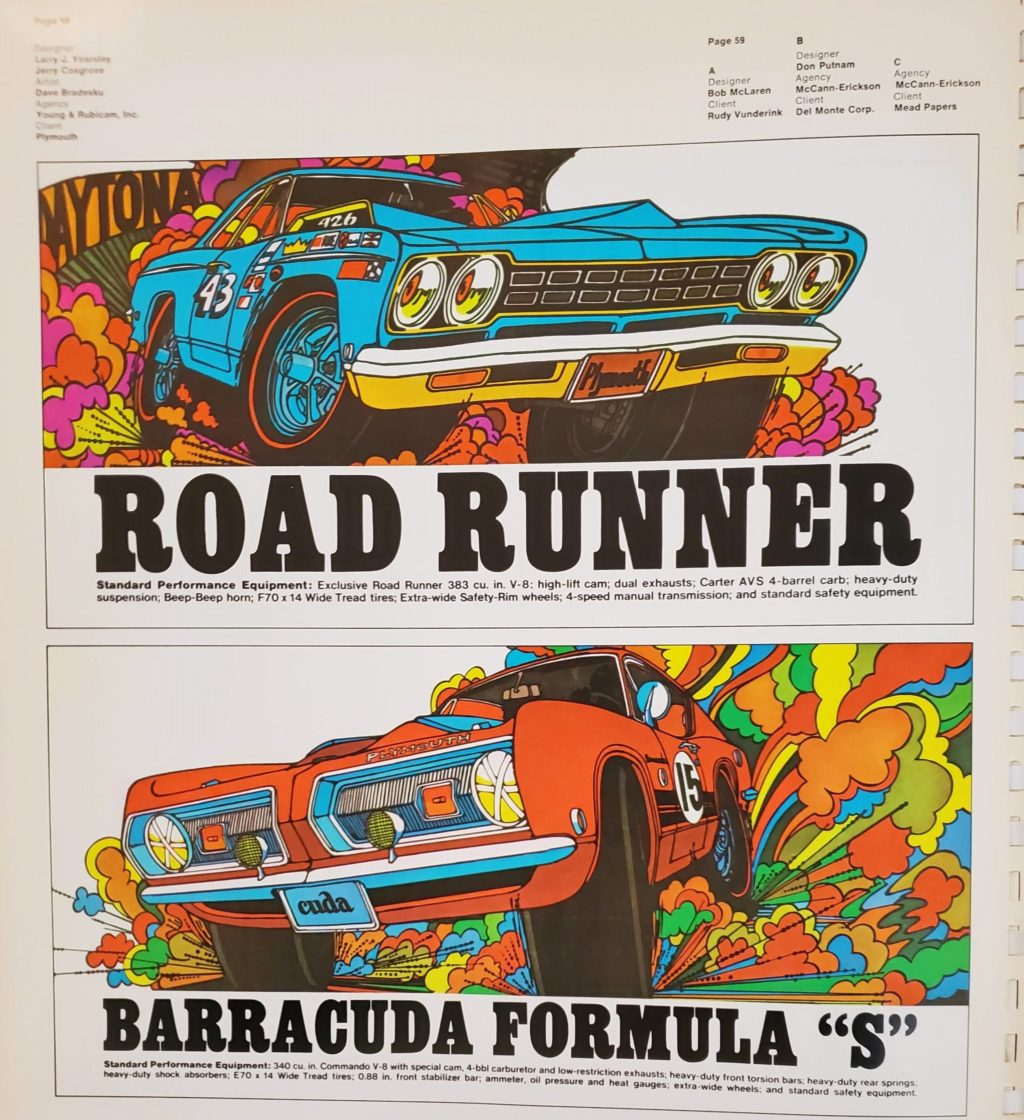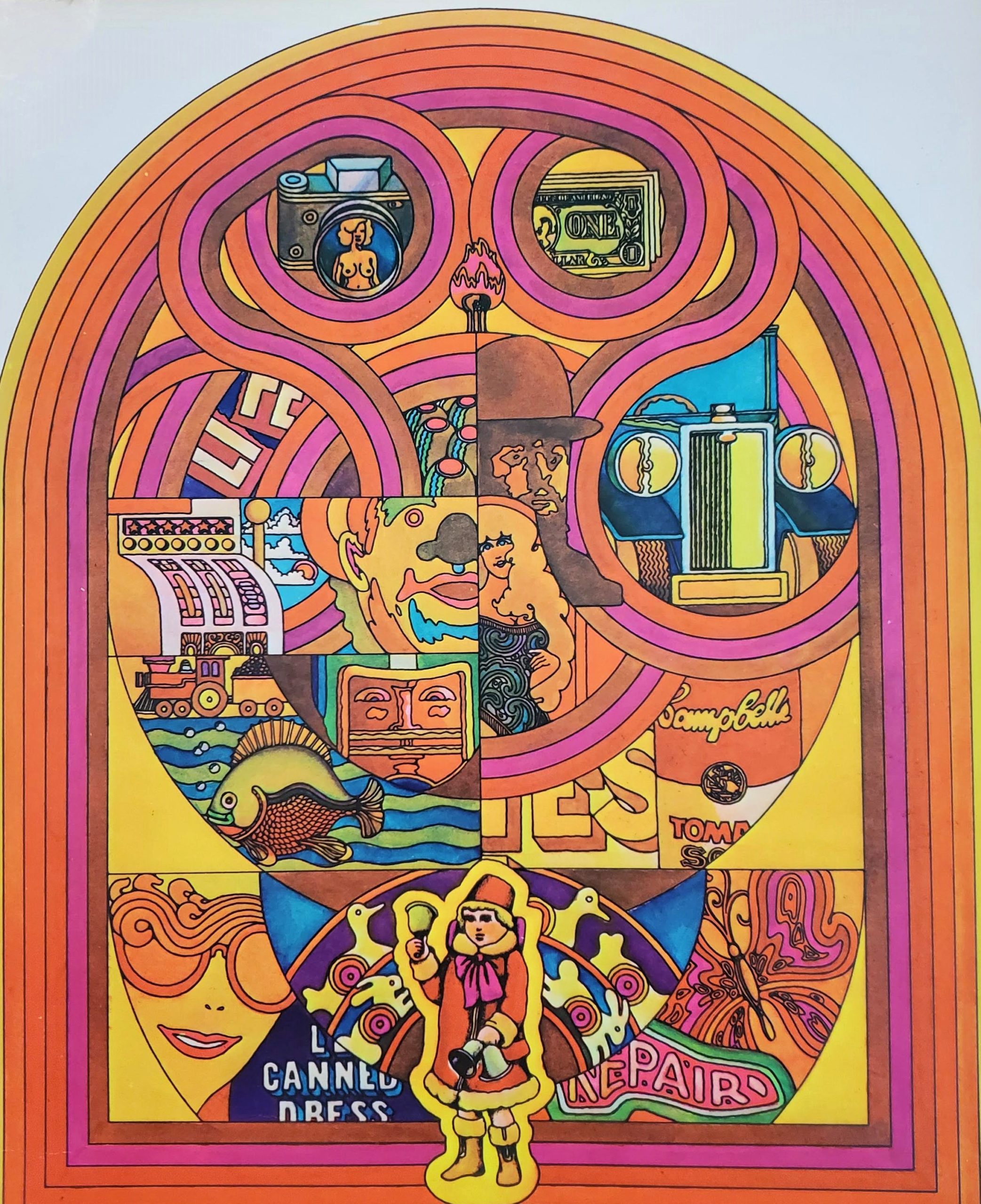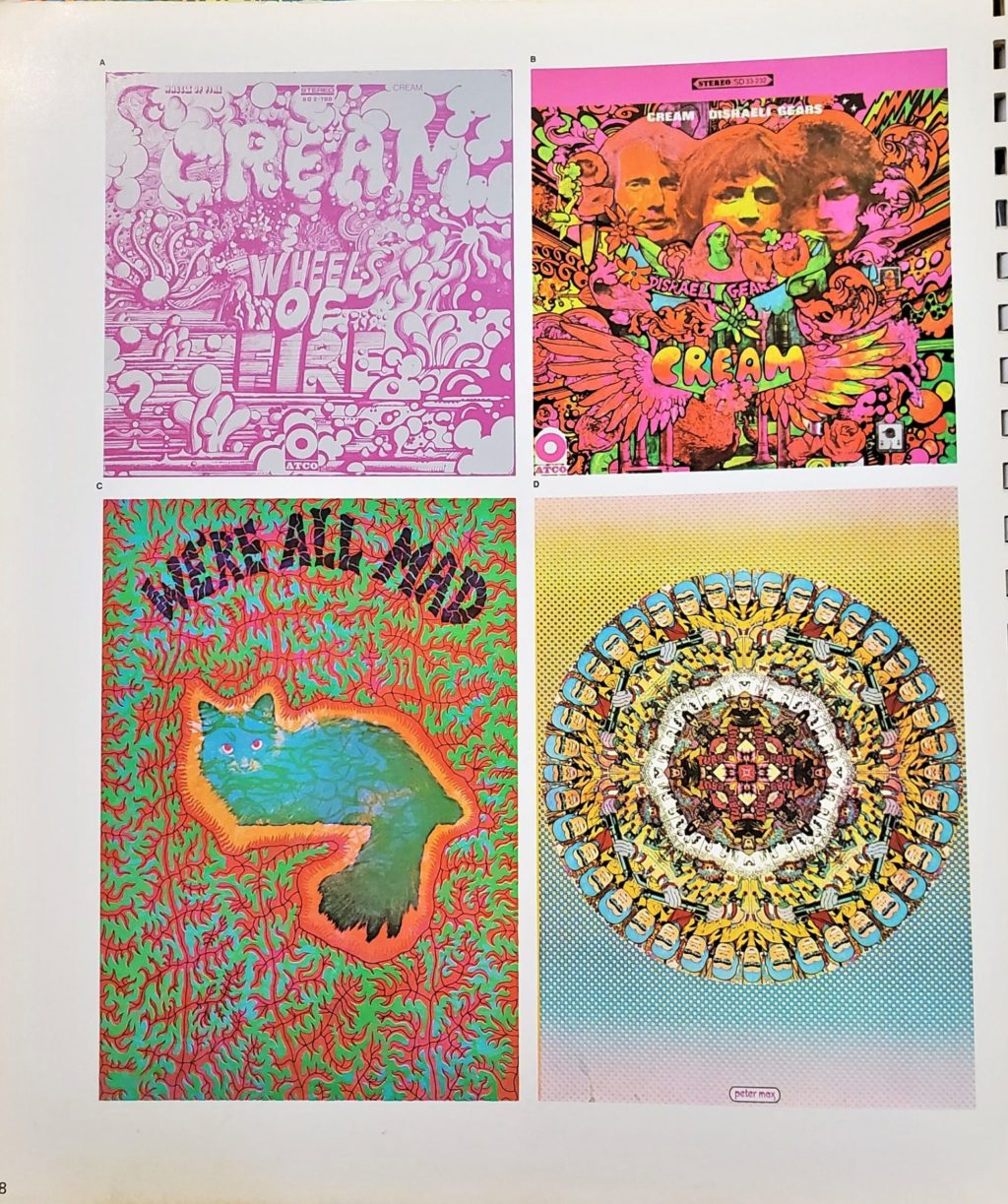Day-Glo® : a moniker describing shades of orange, pink, green, blue, and yellow so bright they seem almost incandescent. The Day-Glo® Designer’s Guide, a trade catalogue in the Cooper Hewitt National Design Library, was published in 1969 at the height of the psychedelic era. The catalogue celebrates Day-Glo® colors at the peak of their popularity with the youth culture of the time, but the Day-Glo® story began much earlier.
In the early 1930s, brothers Robert and Joseph Switzer, the sons of a pharmacist, began exploring naturally fluorescent compounds. As an experiment, they took a black light (a long-wavelength, ultraviolet lamp) into their father’s storeroom where they observed a number of drugs glowing. The compounds were excited by the lamp’s invisible light. The brothers combined some of the compounds with pigment and shellac. They painted the fluorescing mixtures on props and costumes that Joseph would use in a magic act. Their interests piqued, the brothers worked to develop the first black light fluorescent paint. To exploit its commercial potential, the Switzers started a business in 1934.
The glowing pigments were initially used in merchandizing and industry, for posters, displays, and safety applications. Near the start of World War II, the brothers developed a “daylight fluorescent” pigment. During the war, the US military put the pigment and pigment-treated fabrics to multiple uses, such as visual aids for pilots making night landings on aircraft carriers. Throughout the 1940s and 1950s, the Switzer brothers created new paints, and in 1952, their company obtained a federal registration of the trademark “DAY-GLO®”. In the 1960s, fluorescent paints and inks flourished in advertising, packaging, graphics, and the arts. The brothers took two important actions in 1969: they changed the name of their company—known since 1946 as Switzer Brothers, Inc., it became the Day-Glo Color Corporation; and they published this catalogue to showcase their industry-leading work.
In the hedonistic youth culture of the 1960s and early 1970s, black light-illuminated Day-Glo® imagery became popular in night clubs and discotheques. Fluorescent pigments created a color-saturated, “mind-blowing” psychedelic experience; revelers felt transported to another world. A generation of pop artists adopted Day-Glo® pigments as an expressive medium. Furnishings, clothing, and accessories colored with Day-Glo® appeared more vibrant and “hip” to consumers than those in conventional palettes. The dynamic imagery of car advertisements targeting young American males popped off the page when rendered in Day-Glo® fluorescents, evoking unrestrained speed and power (image below).

Page featuring images of automobile advertisements, from The Day-Glo® Designer’s Guide.
I remember when the iconic album cover for Disraeli Gears, by the British rock band Cream, first came out (image below, top right). It was revolutionary—appreciated by contemporary music and art lovers alike. It just seemed like the coolest, most amazing album cover out there. Disraeli Gears was a shock to the eye and traditional sensibilities—wildly colored, psychedelic, and mysterious.
Many of these images are fondly nostalgic to me. Undeniably eye-catching, these colors found their way into advertising, packaging, fashion, and the fine arts. They became a symbol of 1960s pop culture. In today’s high tech world of digitally-produced visuals, the Day-Glo® palette may be just another bygone medium. Despite their age, the dazzling hues remain a part of popular culture: instantly recognizable tropes of 1960s psychedelic exuberance.
Elizabeth Broman is a Reference Librarian at the Cooper Hewitt, Smithsonian Design Library.


2 thoughts on “Strange Brew: Creating Fluorescent Pigments”
EL on May 18, 2020 at 2:57 pm
I remember the posters designed for concerts at the Fillmore Ballroom in San Francisco, where I grew up. The all-over designs (like “We’re all mad” above were made even more arresting by the Day-Glo® colors.
David Edward Byrd on May 18, 2020 at 6:04 pm
As a poster artist fir the Fillmore East I was very excited when these pigments were produced. Tho they are eye-catching there was one little problem — these colors faded quickly when exposed to sunlight / daylight. I did tests at the time and the colors practically disappeared after a week. I now print my posters using Pigmented Inks which never fade in daylight.